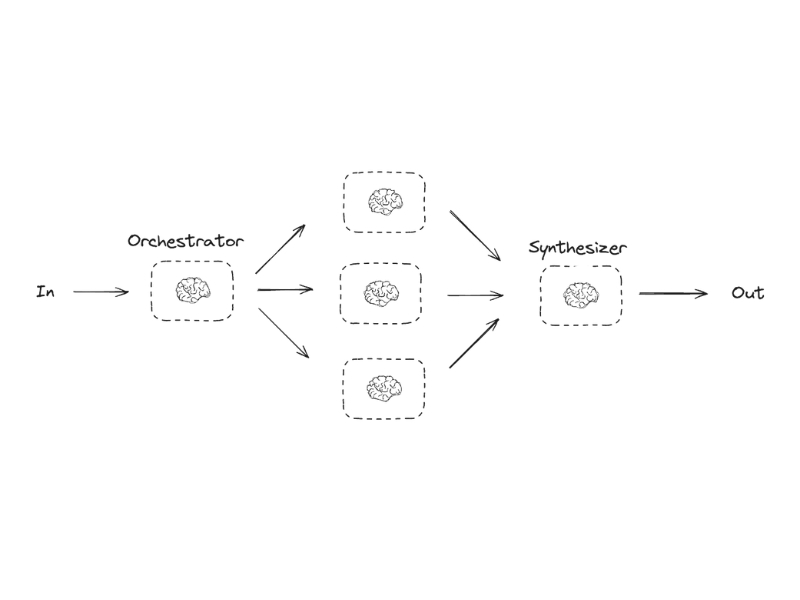Orchestrator-Worker (The Project Manager and Team Analogy)

Imagine you are the Project Manager for a very complex task, like building a house from scratch. The client gives you a general goal: "I want a modern 3-bedroom house."
You, as the Project Manager, don't lay bricks or install pipes. Your job is to:
- Analyze the objective: You understand what the client wants.
- Create a dynamic plan: You break down the big goal into smaller tasks. "First, we need the blueprints. Then, prepare the land. After that, build the structure," and so on.
- Delegate tasks to specialists: You call your team. "Architect, draw the blueprints." "Contractor, prepare the land." "Masons, build the walls."
- Synthesize the results: You receive the work from everyone and make sure everything fits together to form the final house.
This model is the Orchestrator-Worker.
- The Orchestrator: This is an LLM that acts as the Project Manager. It doesn't perform the tasks; instead, it analyzes, plans, and delegates.
- The Workers: These are other LLMs (or the same one with different
prompts) that act as the specialists. Each one receives a specific task from the Orchestrator, executes it, and returns the result.
The key difference from other models: Flexibility. In previous models (like chaining or parallelization), the steps or tasks were predefined. Here, the Orchestrator invents the plan on the fly, adapting completely to the user's request. If the client had asked to "renovate a bathroom," the plan and the required specialists would be completely different, and the Orchestrator would decide that in the moment.
Real-World Example: "Automated Presentation Generator"
Imagine an AI tool that you ask to create a presentation on a complex topic.
The Request (The project goal):
"Create a 5-slide presentation on the impact of solar energy in Argentina."
❌ The Wrong Approach: A single giant prompt that tries to research, structure, write, and design everything at once. The result would be chaotic and low quality.
✅ The Right Approach (Orchestrator-Worker):
Step 1: The Orchestrator (LLM Project Manager) receives the request and creates a plan.
- Prompt (to itself):
"Break down the task 'create a 5-slide presentation on the impact of solar energy in Argentina' into a sequence of sub-tasks for specialists." - Output (The dynamically created Action Plan):
Research Worker:"Find current data on the installed capacity of solar energy in Argentina and the main solar parks (e.g., Cauchari)."Research Worker:"Find information on the economic and environmental benefits of solar energy in the country."Writing Worker:"Using the information from tasks 1 and 2, write the content for 5 slides: Title, Introduction, Key Solar Parks, Economic/Environmental Benefits, and Future and Challenges."Graphic Designer Worker:"For each of the 5 written topics, suggest a descriptive image (e.g., a photo of the Cauchari park, a map of solar radiation in Argentina, etc.)."
Step 2: The Orchestrator delegates tasks to the Workers.
- It sends tasks 1 and 2 to two research
Workers, who can work in parallel. - Once the researchers are done, the Orchestrator takes their results and passes them to the
Writing Worker(task 3). - When the writer is finished, the Orchestrator passes the slide content to the
Graphic Designer Worker(task 4).
Step 3: The Orchestrator synthesizes the final work.
- It receives the written content and the image suggestions.
- It assembles everything into a final presentation format and delivers it to the user.
The Magic of this Model: If the user had asked "Create a presentation on the history of Malbec in Mendoza," the Orchestrator would have created a completely different plan on the fly (research grape varieties, winery history, food pairings, etc.), demonstrating its incredible flexibility.